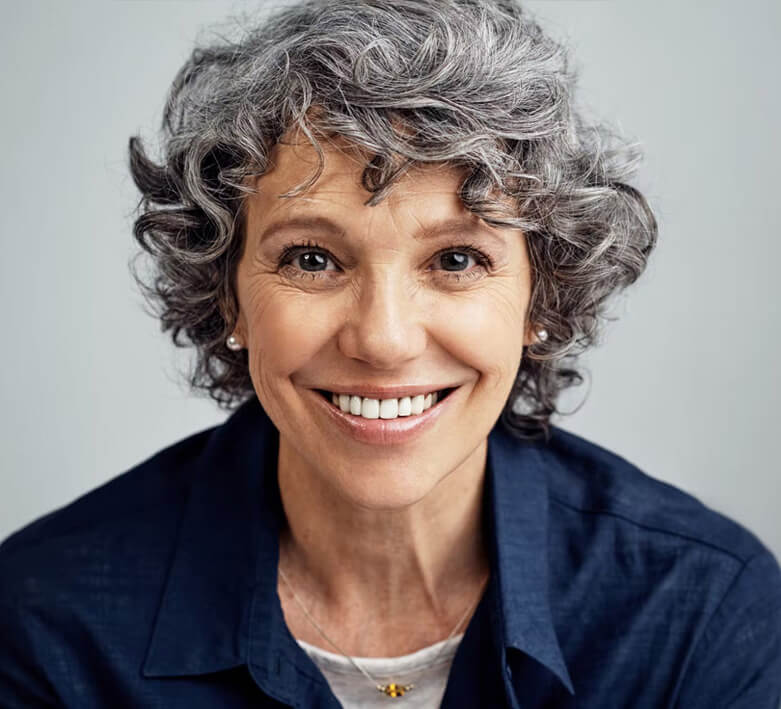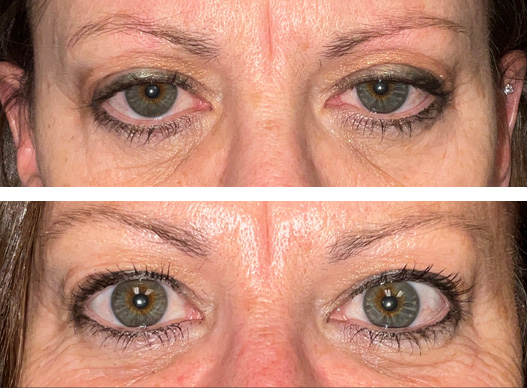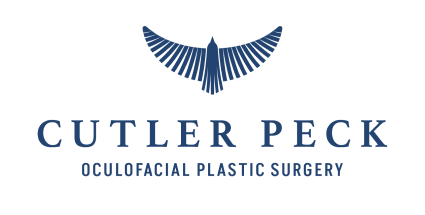Services Ptosis
Ptosis
Idaho Falls and Rexburg
What is Eyelid Ptosis?
Droopy eyelids, or eyelids that don’t open as widely as they should, are called “ptotic”eyelids. (The p is silent when pronouncing ptotic – ‘tät-ik). When someone has droopy eyelids, they have eyelid “ptosis” (‘tō-sis). Droopy eyelids are very common. Sometimes droopy, or ptotic eyelids make it hard to see.
Sometimes a person with a droopy eyelid can see fine, but they don’t like the way the eyelid looks. If you have a droopy eyelid, others may ask you if you are tired, or think you are sleeping when you are wide awake!
How can you tell if you have a ptotic eyelid?
Sometimes it is obvious to a person that their eyelid is droopy. They look in the mirror and they can see it. Other times, the individual may notice difficulty with reading when looking downwards, or have trouble with depth perception, but not realize that they have a droopy eyelid. Other signs of a droopy eyelid include deeper forehead lines caused by using the muscle of the forehead to lift the eyelids in order to see better.

What causes droopy eyelids or eyelid ptosis?
There are many different causes of a droopy eyelid. When someone is born with a droopy eyelid, or droopy eyelids, it is called “congenital ptosis”. When someone has congenital ptosis, the muscle that lifts the eyelid is replaced with fatty tissue during development. Congenital ptosis is also seen combined with syndromes and other medical problems that are found at birth.
When an eyelid becomes droopy later in life, it is most commonly because the attachment of the muscle that lifts the eyelid becomes loose. This can happen in someone who wears contact lenses and frequently must pull their eyelids to get their contact lenses in and out. Heavy eyebrows that are too low, or extra eyelid skin that rests on the eyelashes can also push the eyelids down and make them look droopy.
Less commonly, a droopy eyelid can be a sign of an underlying disease, nerve damage, a tumor, or another medical problem. An eyelid can also start to droop after an injury or when there is a mass, such as a stye, that pushes the eyelid down.
An oculoplastic surgeon is an expert physician who can evaluate droopy eyelids and identify the cause and treat it appropriately.
"THE WORLD'S BIG AND I WANT TO HAVE A GOOD LOOK
AT IT BEFORE IT GETS DARK."
JOHN MUIR
Dr. Cutler Peck is recognized as the region’s foremost eyelid surgery specialist.
Dr. Cutler Peck is a double board-certified plastic surgeon focused on Oculofacial
Plastic and Reconstructive Surgery.
Dr. Cutler Peck is a double board-certified plastic surgeon focused on Oculofacial
Plastic and Reconstructive Surgery.

How are droopy eyelids treated?
Just as there are many causes of a droopy eyelid, there are several treatments. Upneeq is an eyedrop that is used to treat ptosis. This provides a great, non-surgical treatment for eyelid ptosis.
If you would like a more permanent repair, surgery is the answer. There are three different surgical techniques that can be used to treat eyelid ptosis. One approach uses an incision that is hidden in the lid crease of your upper eyelid. The second approach is performed for the back side of the eyelid and does not leave a visible scar. The third approach is used for individuals with very severe ptosis who cannot move their eyelid much at all. This technique involves use of the muscles of the forehead to help lift the eyelid. This is done in a very natural appearing way.
The surgical technique that will give you the best outcome will depend on your exam findings. Schedule a consultation with Dr. Peck today to discuss which option is best for you.
Will my insurance cover surgery to treat ptosis?
Surgery to fix a droopy eyelid is considered medically necessary when the eyelid droops down and covers the top part of the pupil. When the eyelid is this low, it will typically make it difficult to see up above and to the sides. When this is the case, insurance will generally cover the surgery to lift the eyelid up to the normal position.
Insurance does not cover the treatment of droopy eyelid with Upneeq eyedrops.

What is the recovery like after droopy eyelid surgery?
The recovery from eyelid ptosis repair surgery will be different depending on which surgical technique is best for you. If an incision is made on the front side of the eyelid, hidden in the eyelid crease, it is common to have swelling that can last for a few weeks. It is also normal to have bruising during this time. When the eyelid is swollen, the swelling will push the eyelid down. This may cause the eyelid to look like it is still a bit droopy. Once the swelling is gone, you will know how far up the eyelid was lifted with surgery.
Lid Lift Goggles are very helpful after eyelid surgery. They provide compression to the eyelid after surgery. This helps prevent the normal bruising and swelling that occur and this in turn helps the eyelids to heal much faster after surgery. Using Lid Lift Goggles after ptosis repair surgery where the incision is made on the front of the eyelid will help speed up the recovery time.
If you have surgery with the incision on the back of the eyelid, the healing is much faster, even without the use of Lid Lift Goggles. Many patients are completely healed from the bruising and swelling as soon as one week after this type of surgery.
How long does treatment last?
If you decide to treat your droopy eyelids with eyedrops, the effect of the drops will be temporary. Once the drop is placed in your eye, it takes about 20-30 minutes for your eyelid to come up. Once your eyelid is open more, it will last for about 6 hours, and then the eyelid will come down again.
Surgery can be a permanent fix for patients with eyelid ptosis. Most patients who have surgery to fix their droopy eyelids will have a permanent result.
BEFORE AND AFTER PHOTOS



This 74-year-old man had a direct brow lift, as well as an upper and lower eyelid blepharoplasty and internal ptosis repair on both sides. He looks and feel refreshed and has had a significant improvement in his vision.

72-year-old woman who had an upper eyelid blepharoplasty. After having her eyelids lifted, she can see much better. She states that it is easier to drive, watch TV, and read. She also says: “It is so much fun because I can wear eyelid make-up now. It makes me happy!”

80-year-old female had her upper eyelids lifted with an internal ptosis repair. This creates more space between the boarder of the upper eyelid and the pupil. She also had an “eyelid lift” or upper eyelid blepharoplasty where the excess upper eyelid skin was removed. A natural, refreshed appearance is the result. She also had internal ptosis repair of both upper eyelids

60-year-old female 2 and ½ weeks after an internal ptosis of both upper eyelids. The ptosis improved with Phenylephrine drops placed in each eye in the clinic prior to surgery. Because her eyelids elevated with the Phenylephrine, the surgery was performed from the side of her eyelid closest to her eye. This is a great approach to ptosis repair as the outcome is very predictable, with minimal swelling or bruising and a quick heling time after surgery. She can see better too!!!!

71-year-old female is thrilled with her surgical results. “I can read now! People tell me how pretty my eyes are now that they can see them! I look so much more awake!” A happy patient is a happy surgeon. Internal ptosis repair is highly predictable with a quick recovery time.

This beautiful 36-year-old female was having difficulty seeing her computer screen at work. Her low eyelids were also affecting her depth perception when she was driving. She was so happy to have her eyelids lifted as it allowed more light in and allows her to see better up above and to the sides.

Cosmetic Bilateral Upper Eyelid Blepharoplasty and Internal Ptosis Left Upper Eyelid: 57-year-old female only eight days after a cosmetic upper eyelid blepharoplasty and ptosis repair of her left upper eyelid by an internal approach. Very mild bruising is still present. Removing the weight of the excess eyelid skin allowed the right upper eyelid to open more. The approach used to lift the left upper eyelid provides a natural result with excellent symmetry of contour between the two upper eyelids. A very small esotropia (where the left eye is looking very lightly to the left.) is seen in the post photo. This is because the individual is focusing on the camera with her right eye and is not a result of surgery.
